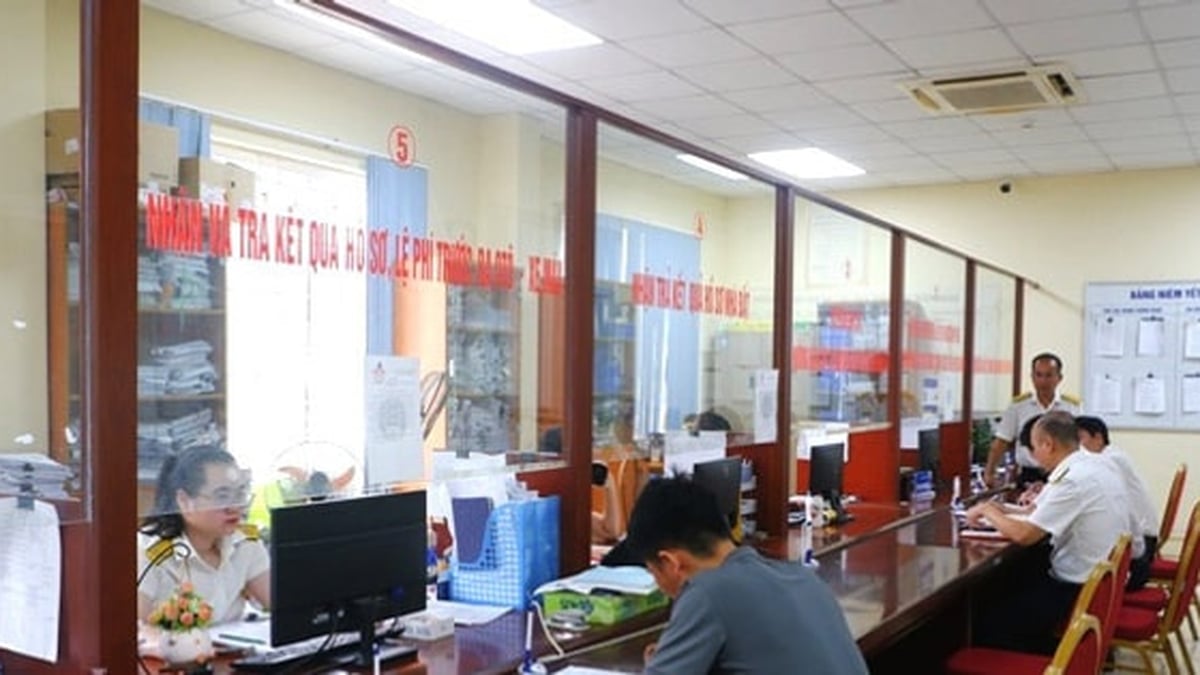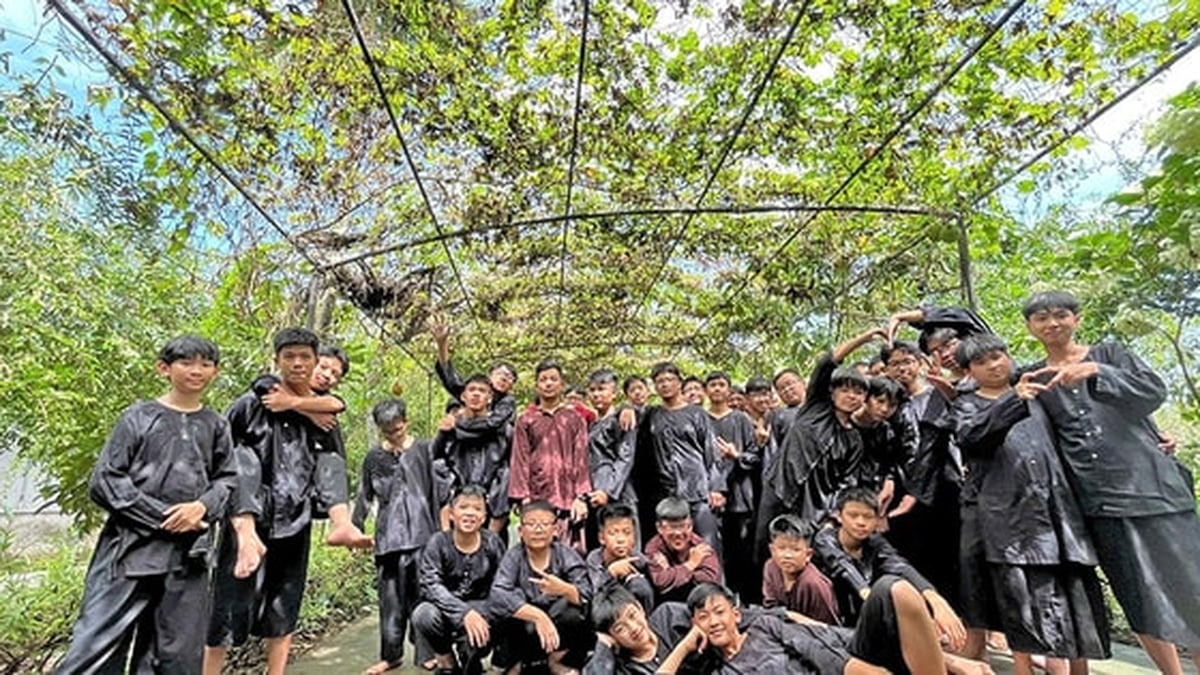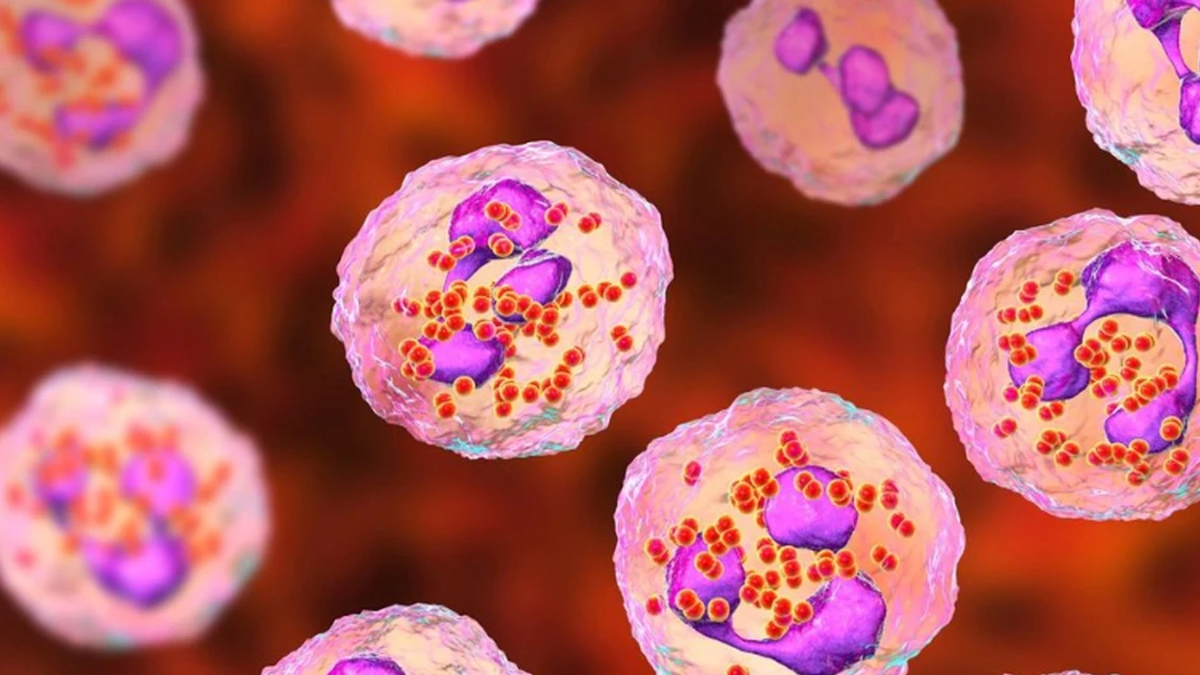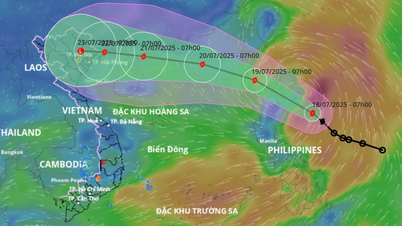The pederin toxin of the female ant has a burning effect 100-150 times higher than sulfuric acid; it causes blistering, ulcers on the skin, and even burns the retina if it comes into contact with the eyes.
Warning signs of danger caused by ant stings
The beginning of the rainy season every year is the time when the three-compartment ants begin to appear in large numbers. The three-compartment ants ( scientific name Paederus fuscipes) are common insects in tropical regions, preferring humidity, and often appearing in large numbers at the beginning of the rainy season. The three-compartment ants are usually about 0.8-1.2cm long, with alternating black and orange-yellow bodies.
 |
| The pederin toxin of the female ant has a burning effect 100-150 times higher than sulfuric acid; it causes blistering, ulcers on the skin, and even burns the retina if it comes into contact with the eyes. |
The body of the female ant contains pederin - a toxic substance that causes blisters, skin burns, and dermatitis. Pederin in the female ant is stored in the abdominal cavity, used to protect her eggs from natural enemies.
Pederin toxin has a burning effect 100-150 times higher than sulfuric acid. When we accidentally touch or rub the body of the ant, the toxin will be secreted, causing contact dermatitis. Pederin can cause burns, blisters, ulcers on the skin, and even retinal burns if it comes into contact with the eyes.
The wound causes pain, itching, and is easily spread if it comes into contact with other areas of the body. If treated, the burn caused by the ant usually heals in about a week, however, dark scars can remain on the skin for months.
Because the ant does not cause pain when secreting venom, the wound is usually only discovered when symptoms such as itchy, red skin or blisters appear.
Specialist Doctor I Tran Nguyen Anh Thu, Department of Dermatology - Dermatology Aesthetics, Tam Anh General Hospital, Ho Chi Minh City, notes 3 methods to minimize the harmful effects of the three-cavity ant.
First, if you find ants on your body, you should gently remove them from your skin. Never touch or apply strong pressure to ants.
If they are irritated, more venom will be released, causing more damage to the skin. Instead, you can blow on or place a piece of paper for the ants to crawl on, then remove them from the skin.
Then, wipe and wash the skin area that came into contact with the ant with saline solution, then rinse with clean water. Another effective way to treat ant bites is to wash the wound with soap and clean water several times. Wash gently to avoid causing pain and spreading the wound.
Finally, if the wound shows signs of blistering, ulceration, or pus, the patient should not arbitrarily apply leaves or medicines of unknown composition. The patient should go to a medical facility for timely diagnosis and treatment to avoid the infection becoming more serious.
Initially, when stung, the skin will feel itchy or slightly tingling. After 6-8 hours, the wound will become red and may be accompanied by an itchy feeling.
The effective way to treat ant bites at this stage is to clean the wound with saline, soap and clean water. After that, the injured person can apply zinc oxide solution to soothe the damaged skin area, reduce itching, burning and redness.
If the sting is not treated beforehand, after 12-24 hours, the wound caused by the ant will show typical lesions such as blisters, blisters due to burns, burning pain, possibly accompanied by itching and discomfort. The wound should be gently cleaned, then zinc oxide or antibacterial drugs should be used. During this time, limit the contact of the damaged skin with other areas of the body.
If treated early, the lesions usually begin to heal after 3 days. The symptoms of heat, burning, and blistering are also reduced. However, you should still maintain gentle hygiene and continue to apply medication to limit the spread and help the wound heal faster.
Five to seven days after being stung, the wound will heal and begin to scab over. Large wounds or severe symptoms can leave dark marks that last for months.
If after a few days of home treatment the wound does not improve, the patient should go to a medical facility for examination. Do not arbitrarily apply or apply folk remedies because it can cause infection, making the symptoms worse.
Patients should go to medical facilities if the wound spreads, becomes infected or has severe symptoms.
Ants usually live in humid areas, are attracted to artificial light, and are located in high places. To prevent ants from appearing in your home, you can apply methods such as: Keep the room clean and airy; shake clothes before wearing; always sleep in a mosquito net; check the bed and pillow before sleeping.
Do not stand in strong light, limit the use of fluorescent lights when there are many ants. Install curtains or insect screens on windows and vents if the living area has many ants.
Lung fluke infection due to unexpected cause
Dang Van Ngu Hospital has just admitted a 7-year-old boy ( Tuyen Quang ) to the hospital with chest pain, difficulty breathing, and lung damage. After examination, it was unexpectedly discovered that the child had lung flukes.
Doctor Phung Xuan Hach, Dang Van Ngu Hospital, said that the hospital had just admitted a 7-year-old boy who was diagnosed with lung flukes. A few months ago, the boy had symptoms of headache and vomiting and his family took him to the provincial hospital for examination.
The patient was then transferred to the National Children's Hospital for treatment due to suspected brain damage. The patient was scanned and tested and was found to have pleural effusion. The child was then treated for the pleural effusion and discharged.
However, recently, he continued to have chest pain and difficulty breathing, so his family took him to the provincial hospital and he was transferred to Dang Van Ngu Hospital. The results of the examination, tests, and X-rays showed that the boy had lung flukes.
According to Dr. Hach, people infected with lung flukes often have symptoms of coughing a lot, coughing up phlegm, phlegm mixed with blood, and possibly chest tightness and difficulty breathing. This makes it easy for patients to confuse it with other diseases such as tuberculosis, pneumonia, bronchitis, etc. If lung flukes are not diagnosed and treated promptly, they will leave serious sequelae in the lungs.
Lung fluke disease has been identified to be prevalent in some northern provinces: Lai Chau, Son La, Hoa Binh, Lao Cai, Yen Bai, Ha Giang, Lang Son, Nghe An...
The development cycle of lung flukes starts from lung flukes laying eggs, eggs follow sputum out of the throat or follow feces when swallowing sputum, eggs fall into water.
In the water environment, the eggs develop and hatch into ciliated larvae. The ciliated larvae enter the snail to develop into tailed larvae. The tailed larvae leave the snail, swim freely in the water, penetrate freshwater shrimp and crabs, shed their tails and develop into cystic larvae in the flesh and viscera of shrimp and crabs.
People (or animals) eat shrimp, crab with uncooked cyst larvae such as: grilled crab, crab sauce, drinking raw crab juice, after eating: The larvae enter the stomach and intestines, penetrate the digestive tract wall into the abdomen, then in pairs penetrate the diaphragm and pleura into the bronchi to nest there. The time from eating the larvae until the adult worms appear is about 5-6 weeks.
To prevent lung flukes, doctors recommend that people always eat cooked food and drink boiled water. To prevent lung flukes, absolutely do not eat uncooked crabs or shrimps; Manage waste such as phlegm, feces or pleural fluid, keep the environment clean; Solve the pathogen by early detection and specific treatment for patients.
Source: https://baodautu.vn/tin-moi-y-te-ngay-57-canh-giac-doc-to-cua-kien-ba-khoang-d219331.html





























































































![[Infographic] In 2025, 47 products will achieve national OCOP](https://vphoto.vietnam.vn/thumb/402x226/vietnam/resource/IMAGE/2025/7/16/5d672398b0744db3ab920e05db8e5b7d)





Comment (0)